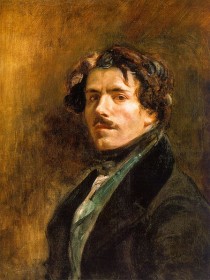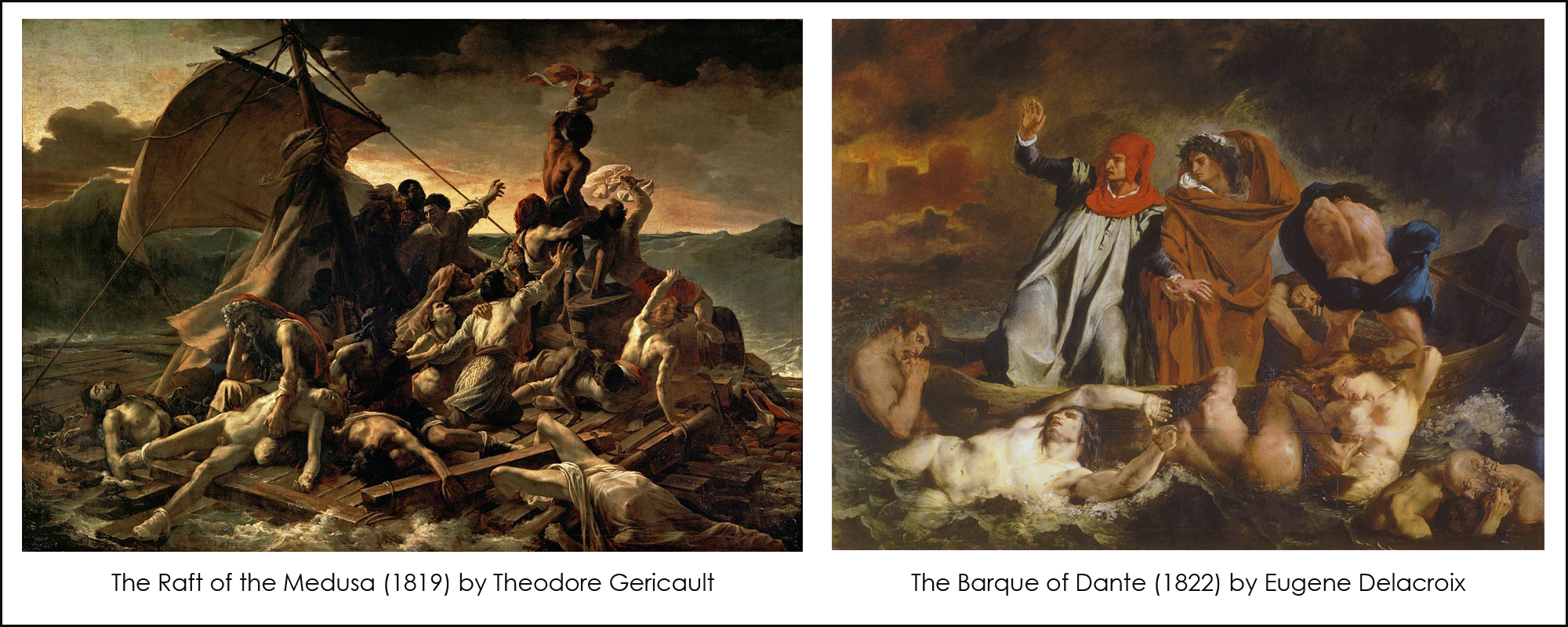 The artist of romanticism, Eugène Delacroix was a French painter, born on 26th April, 1798. He is mainly known for his romanticism in his paintings, as well the excellent use of colors. He painted some great artworks, some of which made ripples in the contemporary times, while some got poorly criticized. Though, up and downs are the real flow of life and no artist has ever experience an undisturbed fame in their lives. He was no exception. But, maybe the luck was not all that furious upon him, as in his career, he didn’t have any steep downfalls. Even in the later years, he was getting good commissions from the patrons.
The artist of romanticism, Eugène Delacroix was a French painter, born on 26th April, 1798. He is mainly known for his romanticism in his paintings, as well the excellent use of colors. He painted some great artworks, some of which made ripples in the contemporary times, while some got poorly criticized. Though, up and downs are the real flow of life and no artist has ever experience an undisturbed fame in their lives. He was no exception. But, maybe the luck was not all that furious upon him, as in his career, he didn’t have any steep downfalls. Even in the later years, he was getting good commissions from the patrons.
He is considered as one of the artists who were born in between the line differentiating the renaissance and the modern era. Thus, he got the best of the both worlds. Having the benefit of inspirations from the past artists like Michelangelo, Peter Paul Rubens and other Venetian renaissance artists, he also got the benefit of the new era, which led the art-world to the era in which the umpteen types of the artistic branches opened up giving the aspiring artist wide range of fields to choose from. Thus, Eugene was born on some kind of sweet point where he had a glimpse of past and future, upon which he developed his own style.
The Romanticism
His early learning of the arts began in Lycée Louis-le-Grand (where the famous writer Victor Hugo studied) and Lycée Pierre-Corneille, where he won various awards for his classic depictions. Though, the biggest impact to bring him near romanticism was the work The Raft of the Medusa by Theodore Gericault in which Eugene served him as a model.
In the work, the figure in the foreground laying on his face downward stretching out one hand is the figure Eugene modeled as. While Theodore was working on the painting, Eugene had the chance to see it. And maybe that was the time, when Eugene conceived the profound impacts of romanticism in his paintings. About the grandeur of the painting, he wrote: “Géricault allowed me to see his Raft of Medusa while he was still working on it. It made so tremendous an impression on me that when I came out of the studio I started running like a madman and did not stop till I reached my own room.”
Just 7 years older Theodore Gericault had made a great impression on the artist, who became the next leading romantic artist after the death of Theodore. Due to the impact, we can see the similarities between the Medusa and Eugene’s work The Barque of Dante, executed right after the time he saw Medusa.
He presented The Braque of Dante in the Salon in 1822, which caused a sensation and was ridiculed by the critics and the public.
Nevertheless, instead of being disappointed by the negative criticism, he kept working on different subjects. The next major production was Massacre at Chios. The theme of the painting was based on the infamous Chios massacre of Greeks by ottoman troops during the Greek war of independence in 1822. The contemporary subject quickly bought the artist to recognition. Though, the sick depiction was not a pleasant scene to view, people embraced the effort to visualize the massacre with acute emotions.
That was the time when Eugene started to build real and static recognition among the critics. His second work again, resembling the war scene from the capture of Missolonghi by Turkish forces in the year of 1825. It just aided the artist’s name as an adept painter.
Arguably, his most famous painting is Liberty Leading the People, a fantastic depiction of the lady liberty glorifying her as a prominent force in the picture.
In the picture, the general romanticism he acquired is not perceivable. Instead, to depict the intense nature of the scenario, he had used to depict it with more realism to create a feel of reality in the depiction and it serves well as we get the sensation of the genuineness in the painting. He wrote about his feelings and reasons of the painting in a letter to his brother “My bad mood is vanishing thanks to hard work. I’ve embarked on a modern subject—a barricade. And if I haven’t fought for my country at least I’ll paint for her.”
The liberty in the painting, have also been put in the French 100 franc banknote in 1993. After that, he had a little trip to North Africa, where learned about the new culture resembling him the ancient Greek culture. Though, there was a strict rule about women showing their faces to other men in the Islamic region, Eugene managed to depict some women in his painting called Women of Algiers in their Apartment. Other notable paintings by the artist are Medea about to Kill her Children, Lion Hunt, The Justice of Trajan, Death of Sardanapalus & The Murder of the Bishop of Liège.
Other works
Apart from the painting on canvas, he also tried to paint on the walls. He produced many murals on the walls of buildings like Chambre des Députés, Palais Bourbon, Library at the Palais Bourbon, Library at the Palais du Luxembourg & Galerie d’Apollon of the Louvre and many other commissions. He also produced some paintings based on the works by William Shakespeare, Walter Scott & Johann Wolfgang von Goethe. Later on, he and his fellow artists established Société Nationale des Beaux-Arts of which his writer friend Theophile Gautier became the chairman of.
In his last years, he rested at a small cottage in Champrosay where he lived until his death in 1863. You can visit the museum devoted to him and his website here.





